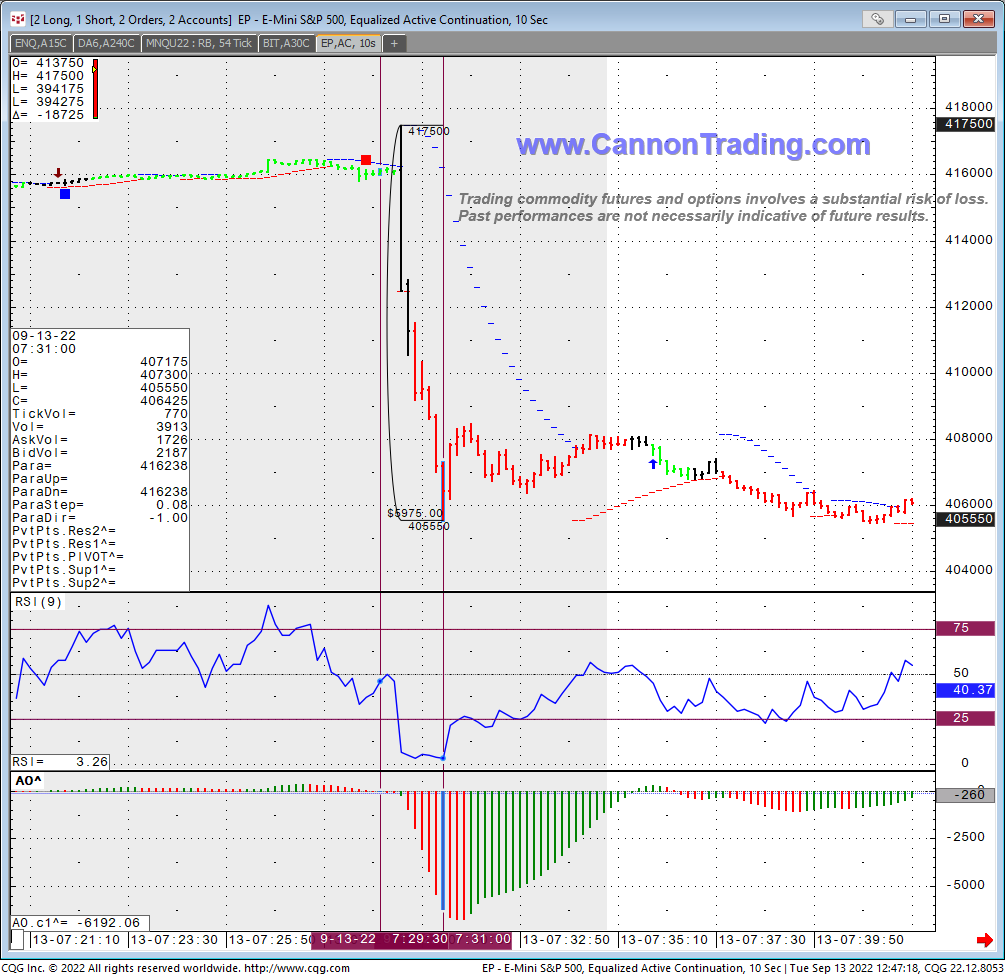The Significance of Price Banding & Stop Orders
by Mark O’Brien, Senior Broker
Yesterday, at 7:30 A.M., Central Time, the Bureau of Labor Statistics released its Consumer Price Index (CPI) report, which measures the prices paid by consumers for a basket of consumer goods and services. Overall prices increased 8.3% from a year earlier, down from an 8.5% rise in July and a 40-year high of 9.1% in June. On that news, within a single minute, the Dec. E-mini S&P 500 futures contract fell ±90 points, roughly from 4160.00 to 4070.00.
This was an exceptionally forceful move and it calls attention to an important control mechanism that the CME Group has implemented not just for the E-mini S&P 500 market, but for all markets and is very important for traders to understand. This mechanism, called Price Banding subjects orders to rules on where they can be placed in the market and rejects orders that are either placed erroneously or come to be outside a given band based on market movement.
There are several important scenarios where Price Banding will affect a trader’s order. This piece looks at STOP orders and in the context of the move in yesterday’s E-mini S&P 500, SELL STOP orders.
The Price Band for the E-mini S&P 500 is currently set at 5.00 points, which because the market trades in .25-point increments, means there are 20 price points, or “handles,” where the market can trade (5 ÷ .25 = 20).
Before the CPI report was released yesterday, the Dec. E-mini S&P 500 was trading at ±4160.00. As is the case with a market that trades in the millions of contracts each day, orders of all types were being placed – and cancelled – at price points up and down the market, including SELL STOP orders below the market. Those SELL STOP orders were subject to the Price Banding parameter of 5 points, which means if a market move resulted in a 5-point or greater price change below any SELL STOP order’s price, the SELL STOP order became a SELL LIMIT order at the price within the band.
By example, before the CPI report when the Dec. E-mini S&P 500 was trading at ±4160.00, if a SELL STOP was placed with a reference price of 4120.00 and the market declined such that it traded through 4120.00 as well as the Price Band price of 4115.00 without filling the order, the 4120.00 SELL STOP order would be converted to a 4115.00 SELL LIMIT ORDER.
A full write-up on price limits and price banding can be found on the CME Group web site: click here.
A complete list of banding information for each electronically traded product is also available: click here (Excel).

Trading Futures, Options on Futures, and retail off-exchange foreign currency transactions involves substantial risk of loss and is not suitable for all investors. You should carefully consider whether trading is suitable for you in light of your circumstances, knowledge, and financial resources. You may lose all or more of your initial investment. Opinions, market data, and recommendations are subject to change at any time when it comes to Futures Trading.
Futures Trading Levels
09-15-2022

Improve Your Trading Skills
Economic Reports, Source:

This is not a solicitation of any order to buy or sell, but a current market view provided by Cannon Trading Inc. Any statement of facts here in contained are derived from sources believed to be reliable, but are not guaranteed as to accuracy, nor they purport to be complete. No responsibility is assumed with respect to any such statement or with respect to any expression of opinion herein contained. Readers are urged to exercise their own judgement in trading.




